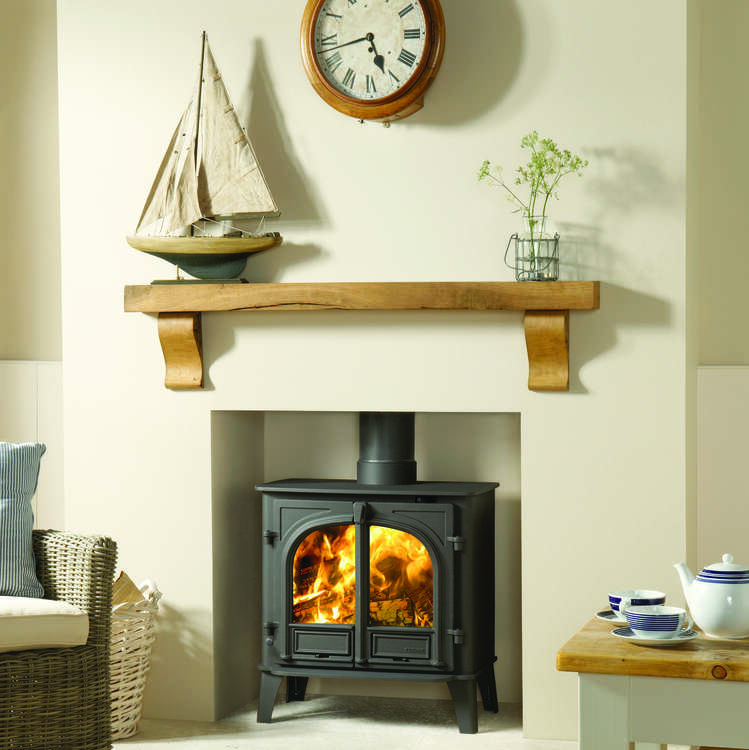Traditional Stoves

Traditional stoves can fit in very well in a classic UK fireplace or room with some heritage. Traditional stoves tend to be box shaped and may well have tracery on the windows and other detailing on the doors, sides and top.
Although the look of the stove may be traditional the way that it works will be up to date making it far more efficient, controllable and burn with lower emissions than it's ancestors. Often this is done by having two baffles (angled plates above the firebox) above the fire so that the hot gasses have to travel much further to get out to the chimney and so have more time to pass heat to the room. The two baffles can mean that these stoves need a good draw to work properly and so need too be connected to a well designed chimney. You do hear of people getting a new traditional-looking stove which then doesn't seem to work as well as the old one. Usually that's because the old stove was not very efficient and so could cope with a less than ideal chimney. The right option there is probably to upgrade the chimney as well as the stove. We offer free chimney advice and design which you can make use of.




